6 Ways to Keep Your Finger on the Pulse
When I started writing at Stew Art Media, I had little to no idea about how the SEO industry worked. As a writer though, I’ve always been accustomed to consuming ridiculous amounts of content in a way that allowed me to get up to date in no time.
So I got to work and used my skills to build out a system that would allow me to learn about the big players in the industry, learn how the industry works and keep up to date with the torrent of content that the Internet produces. Keeping up to date with your industry by building a content consumption model is one of the smartest ways to get ahead with writing your own blog posts and creating effective inbound marketing. Here are the six quick tips that helped me get to the heart of the industry and keep my finger on its erratic pulse.
1. Find authoritative sources and subscribe to their RSS feeds
Sick of bookmarking your favorite websites and visiting them constantly to discover new content? Let the news come to you with RSS. An RSS feed is the raw content of a website that can be plugged into a variety of programs to deliver you their content. Found on most websites, the most common method to using RSS is to import them into Google Reader and then read your feeds in one place, but we’re going to go a bit further than that later on. Organise your feeds by topic and don’t be scared to add subscriptions outside of your industry. Variety is the spice of life, so give your news some flavor with your existing non-work related favorites.
-
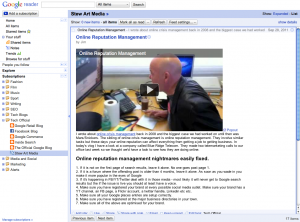
Google Reader's in-browser experience - Here are a few quick tips on how to build out a respectable RSS Feed:
- Find relevant sources: Google your industry and key terms for blogs or news outlets that rank well. Higher rank means higher authority, so add a few of the sites that catch your eye and see what content they deliver. Check their blogrolls and the places they usually link to for new sources. Ask around the office for recommendations as well as searching blog index Technorati for relevant sources and you’ll have a fleshed out resource list in no time.
- Move up the chain: A great way to establish authoritative sources is to discover where everyone is getting their information from. Say an opinion blogger links to a news blogger who links to a news organisation who links to a cable service. Depending on whether you’re looking for analysis, raw news or opinion, you’ve got four different perspectives on the same story right there. Discover which one fits into your feed and avoid duplicate content.
- Set your limits: I know when I come in for the morning and my RSS feed is showing more than 200 unread that my list is getting bulky. Trim the fat and don’t be scared to unsubscribe to feeds you find yourself skipping over regularly. If it’s not relevant or interesting to you, get it out of your list and quit wasting time.
2. Get active on Twitter
While RSS is a great method to discover full articles, we’re seeing more and more news being broken in 140 characters or less these days. Start following important people in your industry (specifically locally) so you can keep up with the conversation. Being active on Twitter also pays dividends when you need to pump your own content into the world so make sure you’re fostering relationships and building a community with your followers. I run the Mac Twitter app for my personal account and use a Fluid-generated app running HootSuite for the Stew Art Media account that run in the background all day.
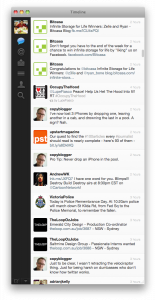
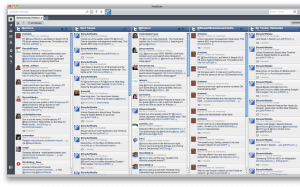
3. Get an iPad
Full disclosure, I’m a former Apple employee, but it’s hard to ignore the impact the iPad, and to a lesser extent the iPhone, have had on the way we consume content. That Google Reader account we set up? Feed it into an iPad RSS reader like NewsRack and you’ll have a great interface to read your new feed that will sync across your devices. Run content discovery apps like Flipbook or Zite to pull content from your social networks and you’ll discover relevant stories and even new feeds to subscribe to. Keeping your finger on the pulse is all about staying active, minimising friction and the discovery of new content, all problems an iPad solves. You’ll find yourself wanting to read your RSS feed more often with an iPad, something you’ll need when 800+ articles are flowing through it per day. Apps like NewsRack are also available for your desktop machine.
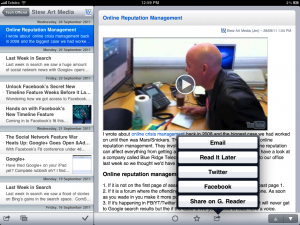
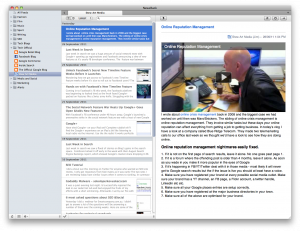
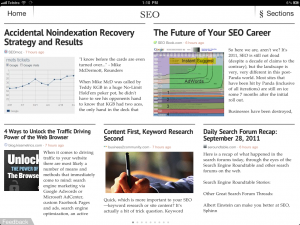
4. Set up a ReadItLater account
Ever come across a great article but don’t have the time to finish it? ReadItLater is your savior. Simply press the ReadItLater bookmarklet in your browser and the article will save to a queue you can access later. With integration into apps like the ones we discussed above, ReadItLater or its alternative Instapaper are a great way to mark stories for future reading, deterring you from reading long articles and making your consumption far easier to digest. Browser plugins and a great iPad app make ReadItLater indispensable to my online reading experience.
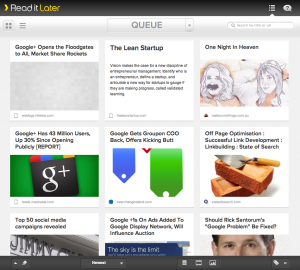
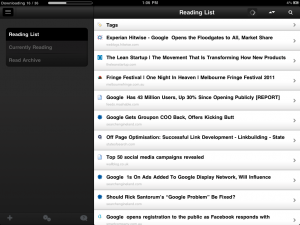
5. Set up Google Alerts for your business
The most important content to you is the content that’s about you. Set up Google Alerts to send you email or RSS notifications anytime you’ve been mentioned online so you know the story before anyone else. Social networks are a great way to interact with customers, but with a daily digest or up to the minute notifications from Google Alerts, you’ll be better prepared to respond to any questions, issues or comments regarding your business on the wider web. Notifications for your domain, your company name and any prominent employees should do the trick.
6. Stop reading newspapers
Even though I come from a journalism background, I’ve now completely stopped reading newspapers. The process of reading a newspaper is a luxury I simply don’t have time for. Think about it, you buy the paper, sit down and devote a significant amount of time reading a whole host of articles that an editor in a newsroom found generic enough to appeal to a broad enough audience. Ask yourself how much in a newspaper is really relevant to your life? You can’t get much more relevant than self selected sources and if something’s important news, you’ll see it on Twitter or Facebook either way. Better yet, follow your local papers on Twitter for when those big news stories do break. With the right content delivery systems in place that deliver the news to you, newspapers become nothing more than a paperweight and a distraction.
Looking for somewhere to start?
Add Stew Art Media’s RSS feed to your Google Reader account and don’t forget to follow us on Twitter @StewArtMedia!

Jim’s been here for a while, you know who he is.


